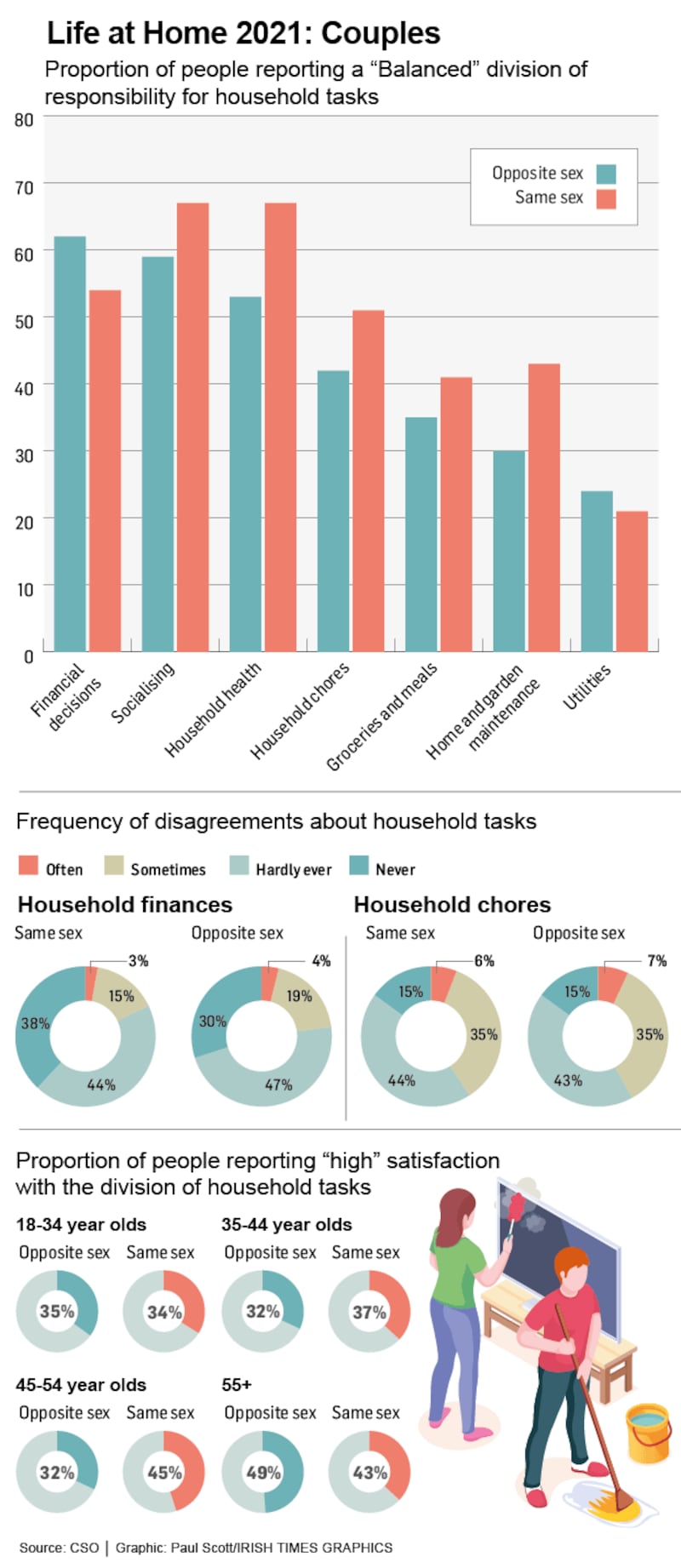Same-sex couples appear to have broadened the definition of marriage equality by sharing household chores much more evenly than opposite sex couples, according to new research from the State’s statisticians.
The study from the Central Statistics Offices (CSO) also confirms that women in opposite sex relationships are more likely to do the lion’s share of household chores while men in those relationships are more likely to express satisfaction with the division of labour.
The Life at Home pulse survey from the CSO looks at couples in their homes and reports that people living with a same-sex partner have a more balanced division of responsibility for five of seven household tasks it put under the spotlight.
Same-sex couples are more likely to report an equal balance of labour when it comes to household chores, home and garden maintenance, groceries and meal preparation, managing health appointments and organising social activities.

All told 30 per cent of men living with a same-sex partner believe there is a balanced division of most household tasks compared to 25 per cent of women in same-sex relationships.
Women in opposite sex couples are more likely to say they are mostly responsible for household chores, groceries and meals, managing health appointments and organising social activities, while men are more likely to report being largely responsible for financial decisions, home and garden maintenance and setting-up or renewing household utilities.
Almost two thirds of women say they are mostly responsible for household chores, compared to 9 per cent of men. Women are significantly more likely to take responsibility for grocery shopping and meal preparation, while men are more likely to say they looked after home and garden maintenance.
Women also take the lead in organising social activities – a finding that is particularly stark among older people.
Just under half (46 per cent) of female retirees said they are mostly responsible for organising their social interactions, like meeting up with extended family and friends, compared to one in 20 (5 per cent) male retirees living with a partner who is also retired.
Among opposite sex couples as a whole, there is also a disconnect when it comes to perception of workload with 65 per cent of women saying they are mostly responsible for the chores and just 38 per cent of men suggesting their wives or partners do most jobs around the house.
Satisfaction levels
Another finding suggests that men are more likely to be more satisfied with the division of household tasks in opposite sex couples with 47 per cent reporting a high satisfaction level with the division of household tasks compared to 31 per cent of women.
More than eight in 10 women who are not employed and whose male partner is employed said they are mostly responsible for organising and taking care of household chores compared to 27 per cent of men who are not employed with a partner who was employed.
The presence of children appears to make a significant difference to who does what around the house with 43 per cent of women without children saying they are mostly responsible for organising and taking care of household health compared to 78 per cent of women with children.
When it comes to how disagreements are resolved, 23 per cent of women say their opinion usually prevails while just 7 per cent of men say that when there is a dispute in the home their view holds sway.
On financial independence, 92 per cent of those living with a same-sex partner feel free to spend money on themselves without asking permission from their partner compared to 88 per cent of those in opposite sex relationships.
In opposite sex couples, women are more likely to report being free to spend money on themselves without asking permission from their partner with 93 per cent of women indicating this compared to 83 per cent of men.
Commenting on the report, CSO statistician Brian Cahill, said: “The distribution of power and decision-making between partners in a couple has an influence on the ability of individuals in a couple to access opportunities outside the home.”
In total more than 10,000 adults took part in the online survey conducted by the CSO in May and June of this year.












